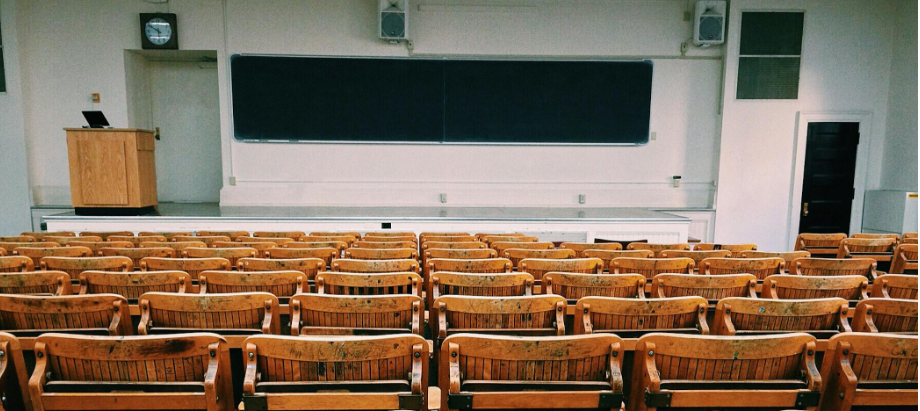The Role of Social Media in Student Education: Navigating the Pros and Cons
November 18, 2023
4 min read
In the contemporary era, the influence of social media on various facets of society, including education, is undeniable. This blog delves into the multifaceted role of social media in student education, exploring both its positive and negative impacts and the strategies for effectively navigating this digital landscape.

- Image By Unsplash
Table of content
In the era of technological advancement, social media has emerged as a powerful force influencing various aspects of our lives, including education. Its impact on student education is a subject of continuous debate. Here let’s explore the pros and cons of the role of social media in student education, addressing the multifaceted aspects that shape the contemporary learning landscape.

Pros of Social Media in Student Education:
Information Access and Knowledge Sharing:
Social media platforms provide a vast pool of information, enabling students to access diverse perspectives, research findings, and educational resources. Collaborative platforms facilitate knowledge sharing among students, fostering a culture of collective learning.
Enhanced Communication and Collaboration:
Social media tools break down geographical barriers, enabling seamless communication and collaboration among students, educators, and experts worldwide. This promotes the exchange of ideas, discussions, and collaborative projects, enriching the learning experience.
Real-time Updates and News:
Social media platforms serve as real-time news sources, keeping students abreast of current events, advancements in their field of study, and global trends. This immediacy enhances students' awareness and understanding of the world around them.
Networking Opportunities:
Social media facilitates professional networking, connecting students with peers, mentors, and professionals in their field. Networking can open doors to opportunities such as internships, research collaborations, and mentorship programs, contributing to students' career development.
Diverse Learning Formats:
Platforms like YouTube and Instagram offer diverse learning formats, such as video tutorials and interactive content. These formats cater to different learning styles, making education more engaging and accessible.
Promotion of Creativity and Self-expression:
Social media platforms provide avenues for students to showcase their creativity and share their perspectives. Blogging, vlogging, and other creative outlets allow students to express themselves, fostering a sense of empowerment and individuality.

Cons of Social Media in Student Education:
Distraction and Time Management:
One of the primary concerns is the potential for social media to serve as a distraction. Students may find it challenging to manage their time effectively, leading to procrastination and reduced productivity in academic tasks.
Privacy and Security Risks:
Social media usage poses privacy and security risks, with potential consequences for students. Oversharing personal information, exposure to cyberbullying, and susceptibility to scams are concerns that demand vigilant awareness and education.
Misinformation and Fake News:
The proliferation of misinformation on social media poses a threat to the accuracy of academic information. Students may encounter misleading content, affecting their understanding of subjects and contributing to the spread of inaccuracies.
Social Comparison and Mental Health Impact:
Social media platforms often encourage social comparison, leading to feelings of inadequacy and stress among students. The curated nature of online content may contribute to unrealistic expectations and negatively impact mental health.
Lack of Quality Control:
The absence of stringent quality control mechanisms on social media platforms raises concerns about the reliability of educational content. Students may inadvertently consume inaccurate or biased information, undermining the credibility of their learning experience.
Digital Addiction and Sleep Disturbance:
Excessive use of social media can contribute to digital addiction, leading to disrupted sleep patterns among students. Sleep disturbance can have detrimental effects on academic performance and overall well-being.

See Also :
Balancing the Scale: Strategies for Effective Use
Digital Literacy Education:
Incorporating digital literacy education into the curriculum can empower students to critically evaluate online content, discern credible sources, and navigate social media responsibly.
Establishing Clear Guidelines:
Educational institutions can establish clear guidelines on the appropriate use of social media for academic purposes. This includes delineating designated times for social media engagement and setting expectations for online behavior.
Promoting Positive Online Communities:
Fostering positive online communities within educational institutions encourages constructive interactions. Emphasizing respectful communication and collaboration contributes to a supportive online learning environment.
Integrating Social Media into the Curriculum:
Integrating social media platforms into the curriculum in a purposeful manner can enhance the learning experience. Educators can design assignments that leverage the benefits of social media while addressing potential challenges.
Encouraging Digital Well-being:
Educational institutions should prioritize students' digital well-being. Initiatives promoting balance, self-regulation, and mental health awareness can mitigate the negative impact of excessive social media use.

In conclusion, the role of social media in student education is a dynamic and evolving landscape with both advantages and disadvantages. Acknowledging the potential benefits while addressing the challenges is essential for harnessing the positive aspects of social media in education. Through strategic integration, digital literacy education, and a commitment to fostering positive online communities, educators and students can navigate the complexities of social media in pursuit of enhanced learning experiences.
Get Daily Insights! Pave your way to academic excellence
Previous Post
The Role of Online Communities in Global Education
The Power of Online Communities: How Virtual Networks Enhance Student Learning
Related Blogs
Navigating College Life: Insights, Tips, and Stories to Thrive on Campus and Beyond.
CollegeBharat Help
Do you need additional help?

Get Support
Log in for Personalized service and assistance.

CollegeBharat Community
CollegeBharat Community is here to help.

Get in touch with our
expert counsellors
By continuing, you are confirming your agreement to CollegeBharat's Terms & Conditions and Privacy Policy.



